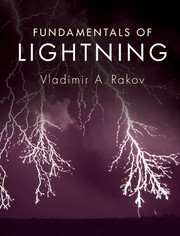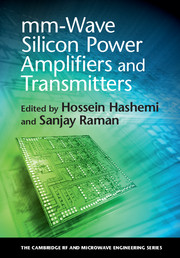Refine search
Actions for selected content:
1808 results in Circuits and systems
Dedication
-
- Book:
- Fundamentals of Lightning
- Published online:
- 05 April 2016
- Print publication:
- 07 April 2016, pp v-vi
-
- Chapter
- Export citation
Appendices
-
- Book:
- Fundamentals of Lightning
- Published online:
- 05 April 2016
- Print publication:
- 07 April 2016, pp -
-
- Chapter
- Export citation
7 - Measurement of lightning electric and magnetic fields
-
- Book:
- Fundamentals of Lightning
- Published online:
- 05 April 2016
- Print publication:
- 07 April 2016, pp 145-160
-
- Chapter
- Export citation
Frontmatter
-
- Book:
- Fundamentals of Lightning
- Published online:
- 05 April 2016
- Print publication:
- 07 April 2016, pp i-iv
-
- Chapter
- Export citation
Appendix 2 - Reconstruction of sources from measured electrostatic field changes
- from Appendices
-
- Book:
- Fundamentals of Lightning
- Published online:
- 05 April 2016
- Print publication:
- 07 April 2016, pp 197-199
-
- Chapter
- Export citation
References
-
- Book:
- Fundamentals of Lightning
- Published online:
- 05 April 2016
- Print publication:
- 07 April 2016, pp 238-252
-
- Chapter
- Export citation
Appendix 5 - Is it true that lightning never strikes the same place twice?
- from Appendices
-
- Book:
- Fundamentals of Lightning
- Published online:
- 05 April 2016
- Print publication:
- 07 April 2016, pp 212-212
-
- Chapter
- Export citation
Appendix 9 - Bibliography on triggered lightning experiments and natural lightning observations at Camp Blanding, Florida (1995–2014)
- from Appendices
-
- Book:
- Fundamentals of Lightning
- Published online:
- 05 April 2016
- Print publication:
- 07 April 2016, pp 225-235
-
- Chapter
- Export citation
2 - Incidence of lightning to areas and structures
-
- Book:
- Fundamentals of Lightning
- Published online:
- 05 April 2016
- Print publication:
- 07 April 2016, pp 17-30
-
- Chapter
- Export citation
Appendix 8 - Lightning makes glass
- from Appendices
-
- Book:
- Fundamentals of Lightning
- Published online:
- 05 April 2016
- Print publication:
- 07 April 2016, pp 218-224
-
- Chapter
- Export citation
5 - Calculation of lightning electromagnetic fields
-
- Book:
- Fundamentals of Lightning
- Published online:
- 05 April 2016
- Print publication:
- 07 April 2016, pp 115-126
-
- Chapter
- Export citation

Fundamentals of Lightning
-
- Published online:
- 05 April 2016
- Print publication:
- 07 April 2016

mm-Wave Silicon Power Amplifiers and Transmitters
-
- Published online:
- 05 April 2016
- Print publication:
- 04 April 2016
6 - Stacked-transistor mm-wave power amplifiers
-
-
- Book:
- mm-Wave Silicon Power Amplifiers and Transmitters
- Published online:
- 05 April 2016
- Print publication:
- 04 April 2016, pp 207-256
-
- Chapter
- Export citation
List of Contributors
-
- Book:
- mm-Wave Silicon Power Amplifiers and Transmitters
- Published online:
- 05 April 2016
- Print publication:
- 04 April 2016, pp ix-x
-
- Chapter
- Export citation
2 - Characteristics, performance, modeling, and reliability of SiGe HBT technologies for mm-wave power amplifiers
-
-
- Book:
- mm-Wave Silicon Power Amplifiers and Transmitters
- Published online:
- 05 April 2016
- Print publication:
- 04 April 2016, pp 17-76
-
- Chapter
- Export citation
Contents
-
- Book:
- mm-Wave Silicon Power Amplifiers and Transmitters
- Published online:
- 05 April 2016
- Print publication:
- 04 April 2016, pp v-viii
-
- Chapter
- Export citation
3 - Characteristics, performance, modeling, and reliability of CMOS technologies for mm-wave power amplifiers
-
-
- Book:
- mm-Wave Silicon Power Amplifiers and Transmitters
- Published online:
- 05 April 2016
- Print publication:
- 04 April 2016, pp 77-138
-
- Chapter
- Export citation
Index
-
- Book:
- mm-Wave Silicon Power Amplifiers and Transmitters
- Published online:
- 05 April 2016
- Print publication:
- 04 April 2016, pp 457-458
-
- Chapter
- Export citation
8 - Outphasing mm-wave silicon transmitters
-
-
- Book:
- mm-Wave Silicon Power Amplifiers and Transmitters
- Published online:
- 05 April 2016
- Print publication:
- 04 April 2016, pp 302-333
-
- Chapter
- Export citation
